This article was co-authored by David Nazarian, MD and by wikiHow staff writer, Amy Bobinger. Dr. David Nazarian is a board certified Internal Medicine Physician and the Owner of My Concierge MD, a medical practice in Beverly Hills California, specializing in concierge medicine, executive health and integrative medicine. Dr. Nazarian specializes in comprehensive physical examinations, IV Vitamin therapies, hormone replacement therapy, weight loss, platelet rich plasma therapies. He has over 16 years of medical training and facilitation and is a Diplomate of the American Board of Internal Medicine. He completed his B.S. in Psychology and Biology from the University of California, Los Angeles, his M.D. from the Sackler School of Medicine, and a residency at Huntington Memorial Hospital, an affiliate of the University of Southern California.
There are 19 references cited in this article, which can be found at the bottom of the page.
This article has been viewed 22,541 times.
As the number of cases of coronavirus (COVID-19) rises in the U.S., you may find yourself growing concerned about your own risk, especially if you're feeling unwell. Try not to worry because it's possible your symptoms aren't caused by coronavirus.[1] If you believe you may have been exposed to coronavirus and want to be tested, it should be pretty easy to find a testing site in your area. Alternatively, you can order a test online, have it shipped to your home, then send your sample back to the lab. Meanwhile, stay home so you won't risk infecting others. If you want to get an antibody test to see if you've recovered from COVID-19, ask your doctor to order the test.
Steps
Finding a Place to Get Tested
-
1Ask your doctor if you can come in for a test. If you think you’ve been exposed to or have COVID-19, call your primary healthcare provider and let them know. Ask if you should come into the office for a test.[2]
- Your doctor will likely be able to refer you to a standalone testing site if they do not recommend an office visit.
-
2Talk to your doctor about the types of available tests. There are currently two diagnostic tests available to test for active infection with COVID-19: the RT-PCR test and the antigen test. The RT-PCR test is the most accurate and reliable, but the antigen test provides results much more quickly.[3]
- RT-PCR stands for "reverse transcription polymerase chain reaction," and the test detects the virus's genetic material. Typically, you'll have a nasal or mouth swab done to collect a specimen for this test.[4]
- The antigen test also typically uses nasal or mouth swabs, but it detects specific proteins on the surface of the virus. The results of this test are available in 15 minutes, but its accuracy rating is 80-94%, as opposed to the RT-PCR's 99.8% accuracy.[5]
- There are also antibody tests available. These detect antibodies that indicate you've previously been exposed to COVID-19, but they can't rule out an active infection.[6]
Advertisement -
3Check your city or county’s website to find testing locations. Most cities and counties have set up drive-through testing sites. Go to your city or county’s website and look for info pertaining to COVID-19 testing. Locations and times that you can get tested will likely be posted prominently.[7]
-
4See if a drugstore in your area offers testing. Many drug stores, including CVS, are now set up to test people for coronavirus. Call a drugstore in your area or visit their website to find out if they offer this service.[10]
- To find a CVS that offers testing near you, enter your zip code into the tool at https://www.cvs.com/minuteclinic/covid-19-testing.
- You must be 18 years or older and live in the state that you want to get tested in to qualify for a COVID-19 test from CVS.
-
5Make an appointment if necessary. Some testing sites accept walk-ins, while others require an appointment, including CVS. Read all the info on the site or call the center and speak to a representative if you have questions.[11]
Getting Tested In Person
-
1Show up to the testing site with your ID. You’ll need to prove your identity to get tested, so bring your driver’s license or a state-issued ID. In some cases, you may even need to provide proof of residency, so make sure your ID lists your address. If it doesn’t, bring a utility bill or other proof of residency.[12]
- If you had to make an appointment, bring confirmation of your appointment as well (such as an email or text message).
-
2Follow the posted instructions. For many drive-through testing sites, you’ll need to stay in your vehicle and wait in line. Pay attention to any signs and follow the instructions. Similarly, listen to any directions the testing technicians or other staff members provide.[13]
- Be prepared for long wait times!
-
3Allow the technician to swab your nose and/or throat. The primary tests for coronavirus are nasopharyngeal (nose) and oropharyngeal (throat) swabs. During these tests, try to hold as still as possible while the technician uses a swab to collect samples from both areas. While you might experience some discomfort, the test shouldn't be painful.[14]
- The technician will have to hold the swabs at the back of your nose and throat for 5-10 seconds, which may feel slightly uncomfortable. Just try to relax and breathe—it will be over soon.
-
4Wait for the test results. Once you've provided the appropriate samples, the testing site will package and ship your sample to the CDC or an approved lab overnight. The sample will then be tested, and you will be notified as soon as the results are available.[15]
-
5Take precautions to avoid spreading the illness. If you're ill, stay home except to see a doctor or get tested, and try to stay isolated in a separate room from other family members. Cover your mouth and nose with a tissue any time you cough or sneeze, then throw the tissue away.[18]
- Wash your hands frequently with soap and water and sanitize the surfaces in your home to avoid spreading germs to others.
- Wear a face mask when you’re out in public to avoid spreading the virus to others. However, do not rely solely on a face mask to keep you from getting sick if you're healthy—practice physical distancing, avoid touching your face, and wash your hands frequently.[19]
Warning: It is possible for COVID-19 to spread to animals, so keep your pets away from people that don’t live in your household. Additionally, avoid spending time around your pets if you're infected.[20]
Taking a Test At Home
-
1Order an FDA-approved test. As of October 2020, the U.S. Food and Drug Administration has only approved two at-home tests for COVID-19: the Laboratory Corporation of America (Lab Corp) COVID-19 RT-PCR Test [21] and the Phosphorus test [22] You can order the tests online from https://www.pixel.labcorp.com/at-home-test-kits/covid-19-test or https://www.phosphorus.com/covid-19. Fill out the questionnaire and provide your personal information and shipping address.
- You won’t have to pay for the test upfront—the company will bill your insurance or use federal funds to pay for it.
-
2Register your kit online as soon as you get it. Once your test is delivered, register it online so that you can get your results. Go to https://www.pixel.labcorp.com/user/login?destination=register and enter the 12-digit barcode that is printed on the collection tube in the kit.[23]
-
3Wash your hands and open the kit. To make sure the results are as accurate as possible, thoroughly clean your hands before you do anything else. Also, sanitize the surface you’ll set the contents of the kit on.[24]
-
4Swab your nose with the provided tool. Remove one of the cotton swabs from the packaging, being careful not to touch the tip. Take the cap from the collection tube so you can put the swab in it as soon as you’re done. Then, insert the tip of the swab into one of your nostrils and swirl it around inside your nose 3 times. Repeat the process on your other nostril using the same swab.[25]
- Only stick the swab inside your nose far enough that the tip is no longer visible—it doesn’t need to go very deep.
-
5Put the swab in the tube and place the tube in the specimen bag. Stick the swab, cotton side down, into the tube so the part you put in your nose is in the liquid. Then, wash and dry your hands before sealing the collection tube and sticking it into the biohazard specimen bag. Fold the bag in half and place it on top of the gel pack.[26]
-
6Pack and ship your test right away. Fold the gel pack in half so it surrounds the bag, then stick the bag and gel pack into the foil pouch. Place this into the shipping box, then seal it shut. Put the included shipping label on the box, then drop off the box at a FedEx drop box.[27]
- The postage is paid, so you don’t need to worry about that.
- Drop off the box to FedEx immediately after taking the test. Check their schedule to make sure your package will get picked up the same day.
-
7Get your results in an email. It’s important to register your kit as soon as you get it so that you can get your results once they’re available. Lab Corp will email you with the results, so be sure to provide an email address you check frequently.[28]
-
1Call a doctor to ask for a test if you've recovered from COVID-19. Your body develops antibodies, which are a type of protein, to help you fight off infections. If you've had COVID-19, it's likely you'll still have antibodies in your bloodstream. Get a doctor's approval for the antibody test before you visit a healthcare provider. You'll only be approved for the test if you received a COVID-19 diagnosis or may have had an infection.[29]
- You don't develop antibodies right away, so your doctor will likely recommend you wait until you've been asymptomatic for at least 7 days, which means you've probably recovered from the infection.
- Getting an antibody test can help identify people who've had COVID-19 but were asymptomatic.[30]
- As of June 2020, it’s unclear whether you can get infected with COVID-19 more than once or if the antibodies will keep you from getting sick again.[31]
Did You Know? Whether you get approved for a test will depend on test availability. If you haven't been diagnosed with COVID-19, you may not receive an antibody test if they're scarce. However, some communities are including potentially asymptomatic patients in antibody testing.[32]
-
2Visit a healthcare provider to get an antibody test. Antibody tests are offered by select healthcare providers, so follow your doctor's instructions on where to go. They may ask you to come to their office or might direct you to a local lab. Be on time for your appointment.[33]
- If you're sick, call the clinic or lab to ask if you should still come in for your test. They may postpone your test if you're ill.
-
3Allow your healthcare provider to do a simple blood draw. During the antibody test, a lab technician will test your blood to see if it has antibodies present. Try to relax as they draw blood from your arm. You shouldn't feel any pain during the test, but you might feel some discomfort.[34]
- Typically, a healthcare provider will draw the blood from your arm.
-
4Wait 1-3 days for your antibody test results. How long it takes for you to get results will depend on the brand of test you're taking. Ask your doctor how long you'll wait for results.[35]
- They may send you home and call you when your results are ready.
-
5Talk to your doctor about your results. Positive results may be a sign you've recovered from COVID-19 or a similar infection. On the other hand, negative results likely mean you haven't had COVID-19 in the past, though it doesn't rule out an ongoing infection. Ask your doctor to interpret your test results for you.[36]
-
6Don't assume you can't get reinfected if you have antibodies. Normally, having antibodies in your blood means your body has some immunity. However, experts aren't sure if you can gain immunity to coronavirus. Ongoing research suggests it may be possible to get infected again. Until experts are sure, follow your doctor's advice.[39]
- Knowing you've recovered from COVID-19 can be a big relief. However, there's no guarantee you can't get reinfected.
Expert Q&A
Did you know you can get expert answers for this article?
Unlock expert answers by supporting wikiHow
-
QuestionHow do you get tested for COVID-19?
 David Nazarian, MDDr. David Nazarian is a board certified Internal Medicine Physician and the Owner of My Concierge MD, a medical practice in Beverly Hills California, specializing in concierge medicine, executive health and integrative medicine. Dr. Nazarian specializes in comprehensive physical examinations, IV Vitamin therapies, hormone replacement therapy, weight loss, platelet rich plasma therapies. He has over 16 years of medical training and facilitation and is a Diplomate of the American Board of Internal Medicine. He completed his B.S. in Psychology and Biology from the University of California, Los Angeles, his M.D. from the Sackler School of Medicine, and a residency at Huntington Memorial Hospital, an affiliate of the University of Southern California.
David Nazarian, MDDr. David Nazarian is a board certified Internal Medicine Physician and the Owner of My Concierge MD, a medical practice in Beverly Hills California, specializing in concierge medicine, executive health and integrative medicine. Dr. Nazarian specializes in comprehensive physical examinations, IV Vitamin therapies, hormone replacement therapy, weight loss, platelet rich plasma therapies. He has over 16 years of medical training and facilitation and is a Diplomate of the American Board of Internal Medicine. He completed his B.S. in Psychology and Biology from the University of California, Los Angeles, his M.D. from the Sackler School of Medicine, and a residency at Huntington Memorial Hospital, an affiliate of the University of Southern California.
Diplomate, American Board of Internal Medicine
Warnings
- If you think you may be ill, call your doctor and ask how to best protect others from getting sick. They’ll likely recommend that you stay home, except to get tested or seek medical care, to avoid spreading the virus to others.[40]⧼thumbs_response⧽
References
- ↑ https://www.cdc.gov/coronavirus/2019-ncov/about/testing.html
- ↑ https://www.cdc.gov/coronavirus/2019-ncov/testing/diagnostic-testing.html
- ↑ David Nazarian, MD. Diplomate, American Board of Internal Medicine. Expert Interview. 29 May 2020.
- ↑ David Nazarian, MD. Diplomate, American Board of Internal Medicine. Expert Interview. 29 May 2020.
- ↑ David Nazarian, MD. Diplomate, American Board of Internal Medicine. Expert Interview. 29 May 2020.
- ↑ David Nazarian, MD. Diplomate, American Board of Internal Medicine. Expert Interview. 29 May 2020.
- ↑ https://covid19.lacounty.gov/testing/
- ↑ David Nazarian, MD. Diplomate, American Board of Internal Medicine. Expert Interview. 29 May 2020.
- ↑ David Nazarian, MD. Diplomate, American Board of Internal Medicine. Expert Interview. 29 May 2020.
- ↑ https://covid19.lacounty.gov/testing/
- ↑ https://www.cvs.com/minuteclinic/covid-19-testing
- ↑ https://www.cvs.com/minuteclinic/covid-19-testing
- ↑ https://www.cvs.com/minuteclinic/covid-19-testing
- ↑ https://www.cdc.gov/coronavirus/2019-nCoV/lab/guidelines-clinical-specimens.html
- ↑ https://www.cdc.gov/coronavirus/2019-nCoV/lab/guidelines-clinical-specimens.html
- ↑ https://www.goodrx.com/blog/drive-thru-coronavirus-testing-near-me/
- ↑ https://www.cvs.com/minuteclinic/covid-19-testing
- ↑ https://www.cdc.gov/coronavirus/2019-ncov/prevent-getting-sick/prevention.html
- ↑ https://www.cdc.gov/coronavirus/2019-ncov/prevent-getting-sick/cloth-face-cover.html
- ↑ https://www.cdc.gov/coronavirus/2019-ncov/daily-life-coping/pets.html
- ↑ https://www.fda.gov/news-events/press-announcements/coronavirus-covid-19-update-fda-authorizes-first-test-patient-home-sample-collection
- ↑ https://www.fda.gov/media/138652/download.
- ↑ https://www.pixel.labcorp.com/sites/default/files/covid-19-collection-instructions.pdf?v=3
- ↑ https://www.pixel.labcorp.com/sites/default/files/covid-19-collection-instructions.pdf?v=3
- ↑ https://www.pixel.labcorp.com/sites/default/files/covid-19-collection-instructions.pdf?v=3
- ↑ https://www.pixel.labcorp.com/sites/default/files/covid-19-collection-instructions.pdf?v=3
- ↑ https://www.pixel.labcorp.com/sites/default/files/covid-19-collection-instructions.pdf?v=3
- ↑ https://www.pixel.labcorp.com/sites/default/files/covid-19-collection-instructions.pdf?v=3
- ↑ https://www.nih.gov/news-events/news-releases/nih-begins-study-quantify-undetected-cases-coronavirus-infection
- ↑ https://www.cdc.gov/coronavirus/2019-ncov/lab/serology-testing.html
- ↑ https://www.cdc.gov/coronavirus/2019-ncov/testing/serology-overview.html
- ↑ https://www.mayoclinic.org/diseases-conditions/coronavirus/expert-answers/covid-antibody-tests/faq-20484429
- ↑ https://www.cdc.gov/coronavirus/2019-ncov/testing/serology-overview.html
- ↑ https://www.mayoclinic.org/diseases-conditions/coronavirus/expert-answers/covid-antibody-tests/faq-20484429
- ↑ https://allcarefamilymed.com/covid19-antibody-test
- ↑ https://www.cdc.gov/coronavirus/2019-ncov/testing/serology-overview.html
- ↑ https://www.cdc.gov/coronavirus/2019-ncov/lab/serology-testing.html
- ↑ https://www.mayoclinic.org/diseases-conditions/coronavirus/expert-answers/covid-antibody-tests/faq-20484429
- ↑ https://www.cdc.gov/coronavirus/2019-ncov/testing/serology-overview.html
- ↑ https://www.cdc.gov/coronavirus/2019-ncov/if-you-are-sick/steps-when-sick.html
About This Article
If you’re worried that you’ve been exposed to coronavirus and you want to be tested, call your primary healthcare provider and ask if you should come into the office for a test. You can also visit your city or county’s website to find testing locations near you. Some drug stores, like CVS, also offer testing. Some testing sites accept walk-ins while others require an appointment, so call in advance if you’re not sure. When you arrive to get tested, the technician will swab your nose and/or throat. Then you’ll need to wait for your results, which could take several days. As of June 2020, there is also one FDA-approved at-home coronavirus test kit. You can order the test kit online, swab your nose with the provided tool, and ship your sample to the lab. You’ll receive your results via email. To learn how to get an antibody test if you’ve recovered from COVID-19, keep reading.
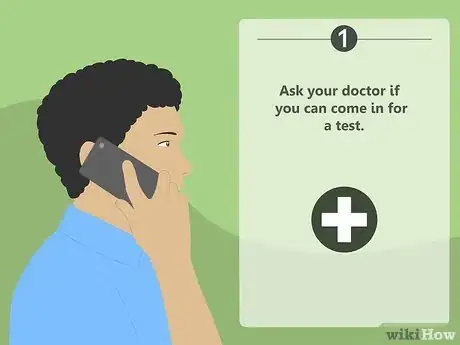

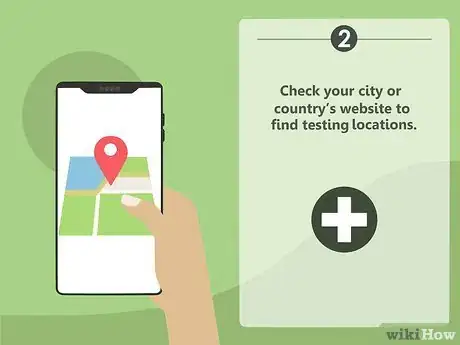
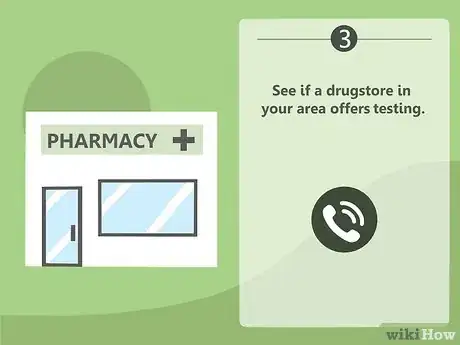
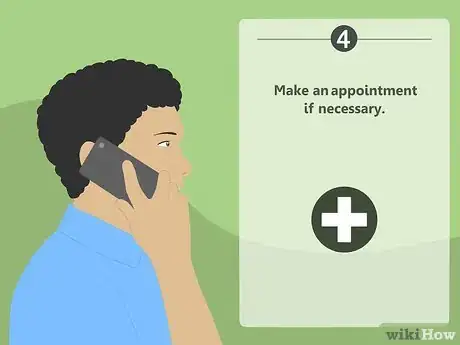
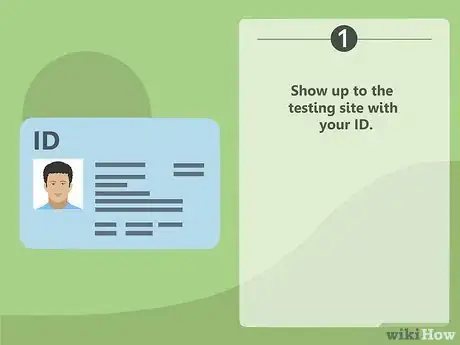
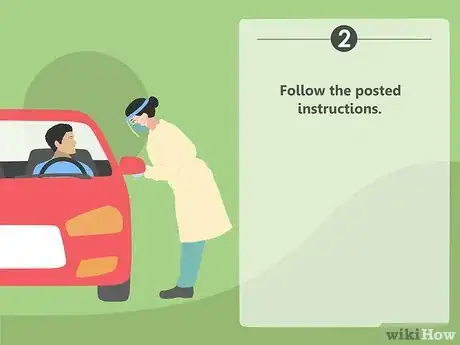
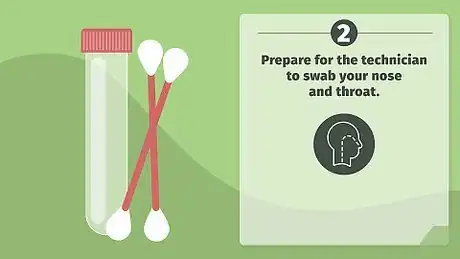
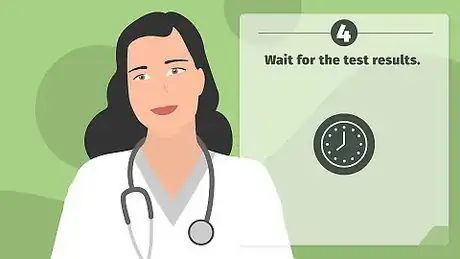
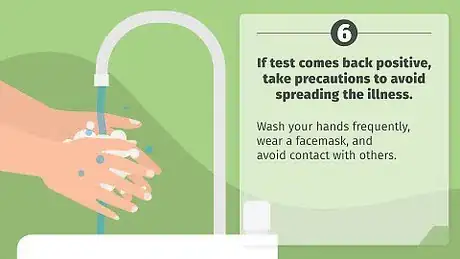

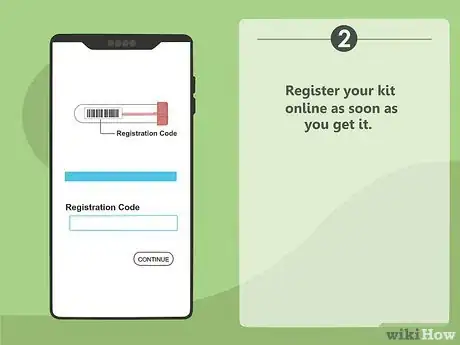
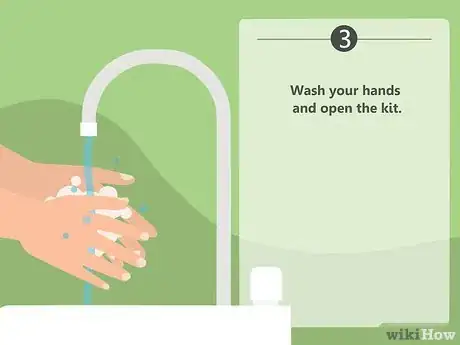
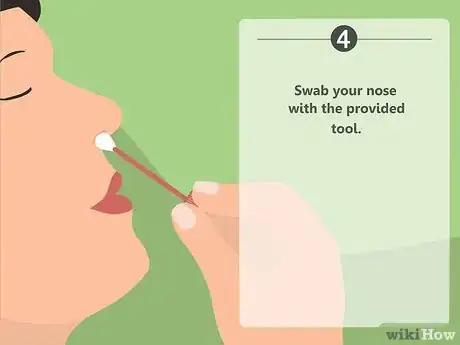
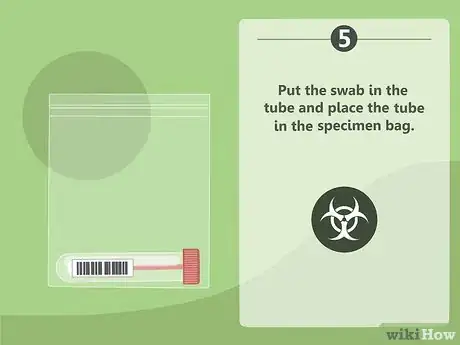
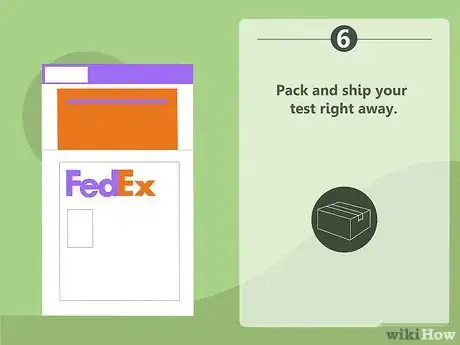
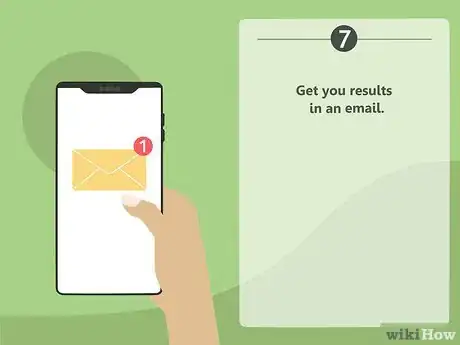
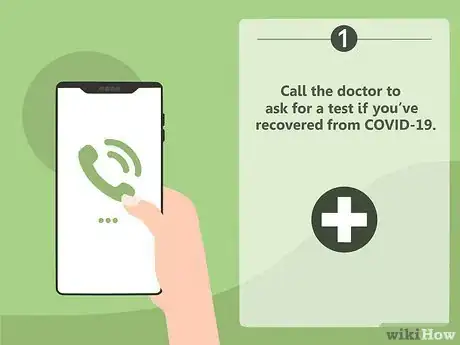
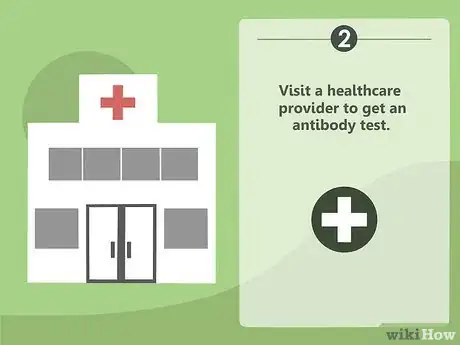
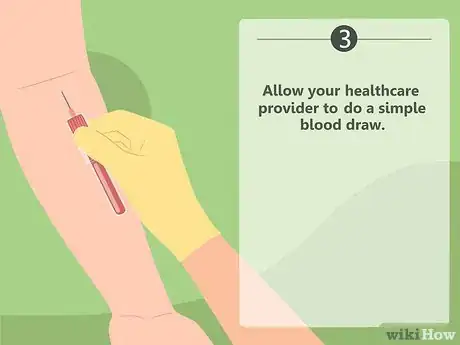
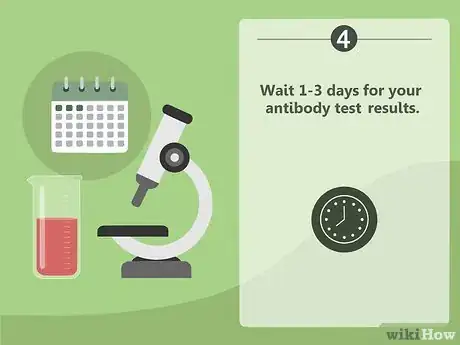
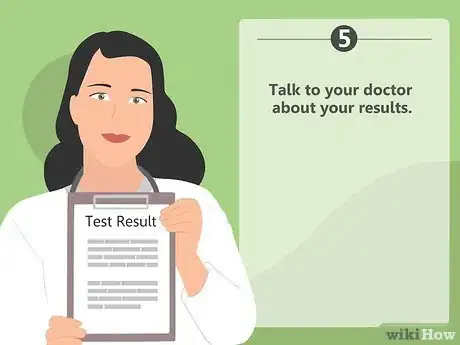
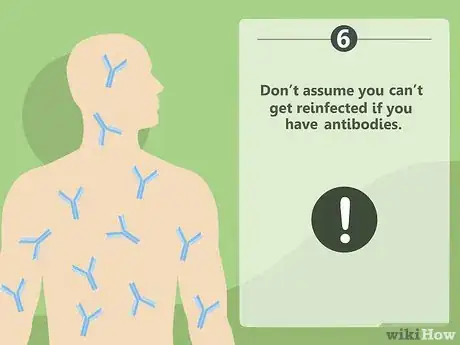







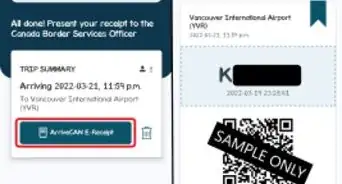
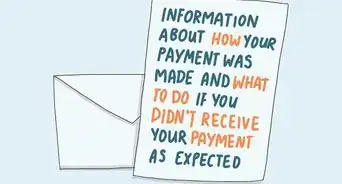





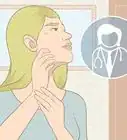




































Medical Disclaimer
The content of this article is not intended to be a substitute for professional medical advice, examination, diagnosis, or treatment. You should always contact your doctor or other qualified healthcare professional before starting, changing, or stopping any kind of health treatment.
Read More...